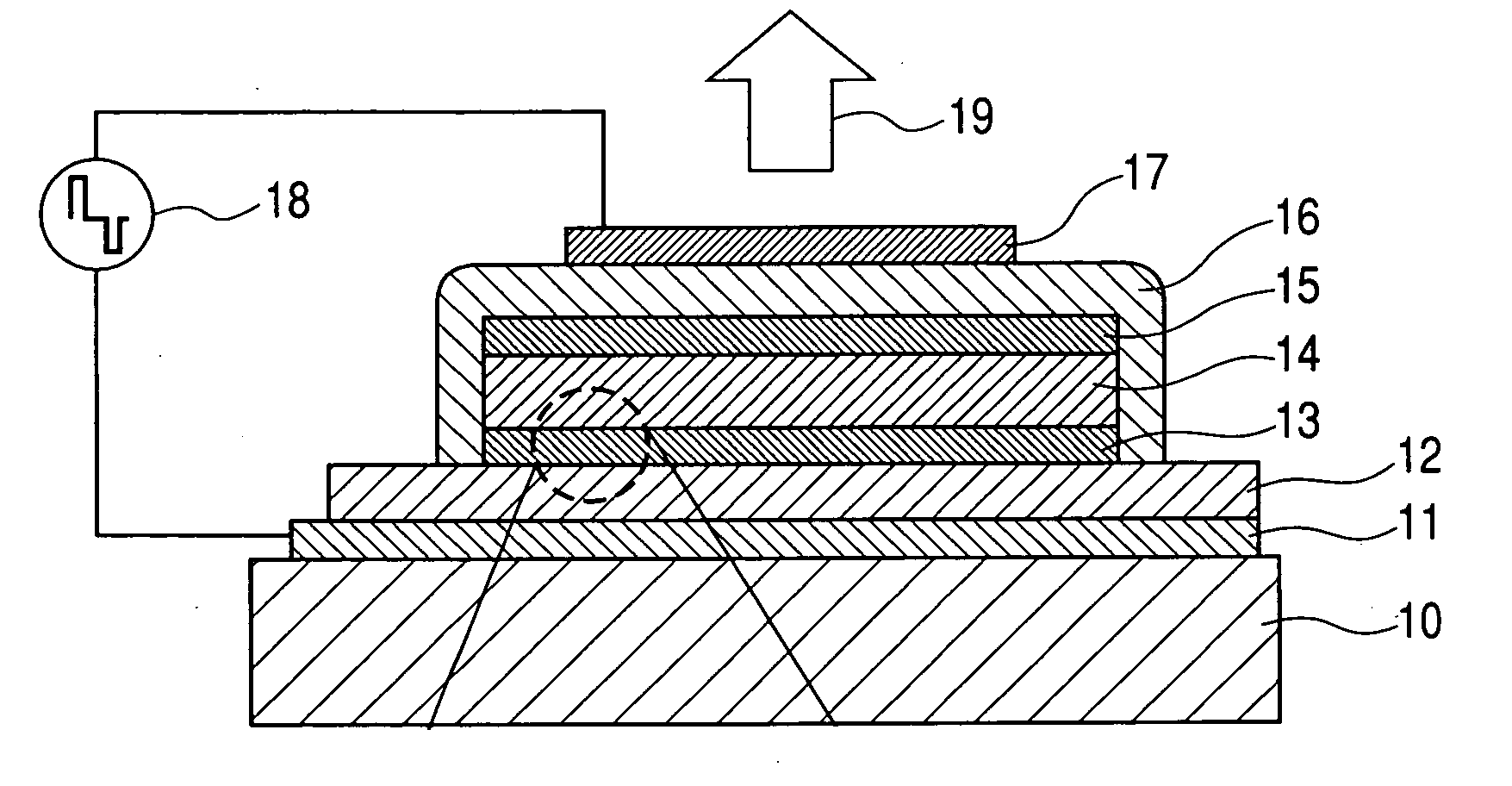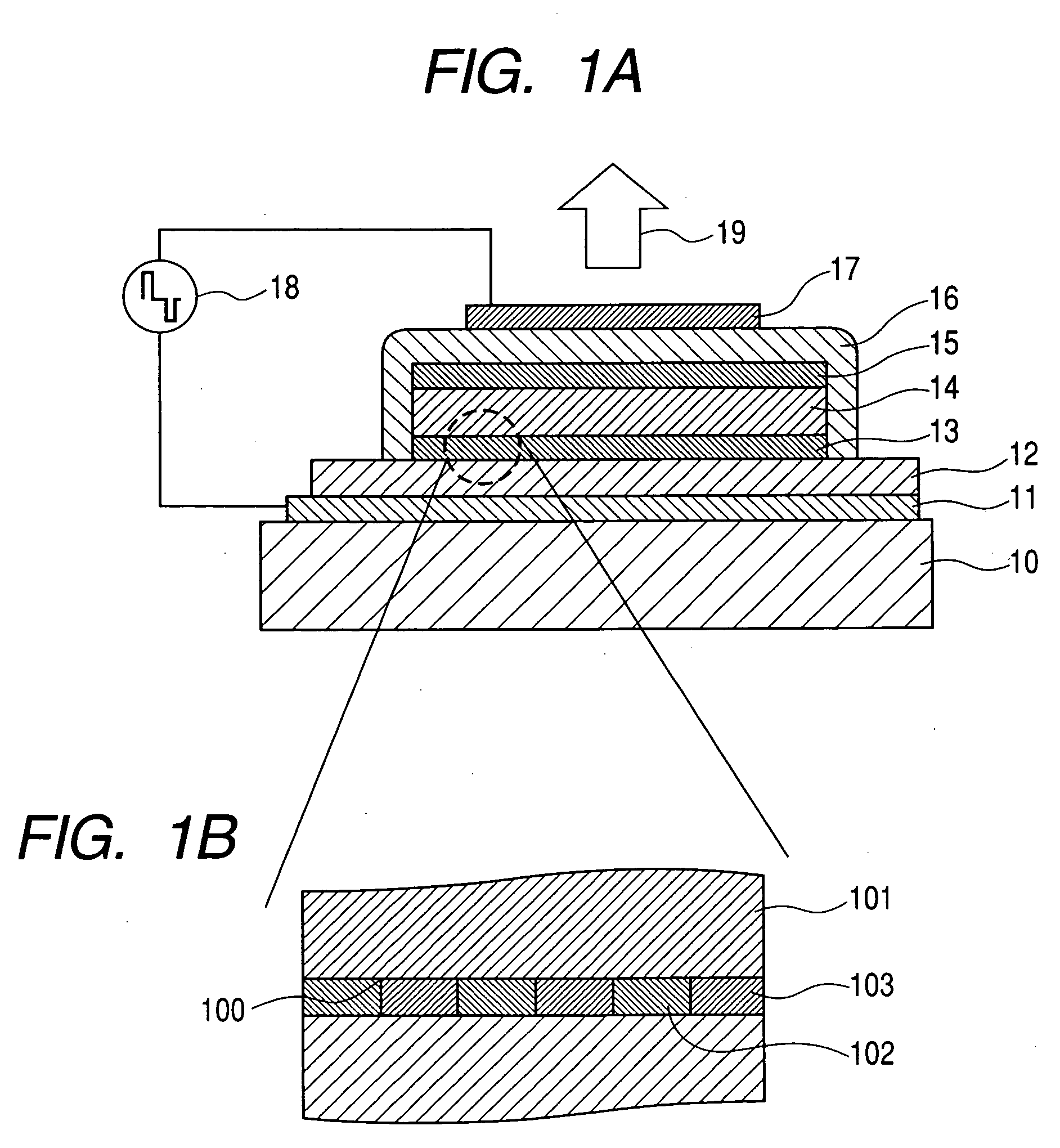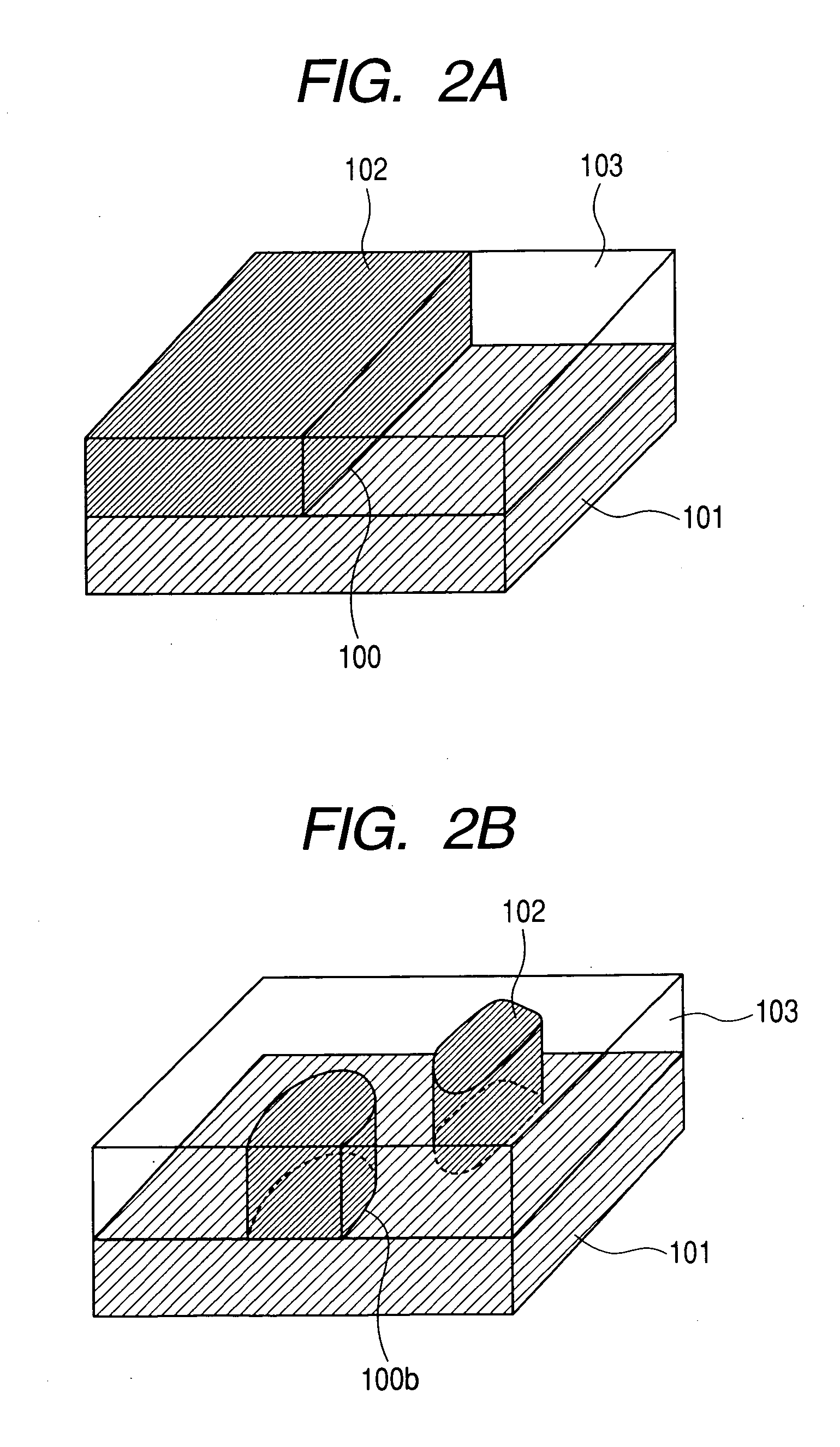Light-emitting device and production method thereof
a technology of light-emitting devices and production methods, which is applied in the direction of identification means, instruments, discharge tubes, etc., can solve the problems of reliability and durability, difficult formation of glass substrates and plastic substrates, and limited application range, and achieve excellent light-emitting efficiency, stability and production cost.
- Summary
- Abstract
- Description
- Claims
- Application Information
AI Technical Summary
Benefits of technology
Problems solved by technology
Method used
Image
Examples
example 1
[0097] A light-emitting device of the present example has a configuration similar to the configuration shown in FIGS. 1A and 1B.
[0098]FIG. 1A is a schematic view showing a configuration of a light-emitting device in accordance with the present invention, and FIG. 1B is an enlarged view of a portion indicated by a chain circle in FIG. 1A.
[0099] In the figures, reference numeral 10 denotes a substrate; reference numeral 11 denotes an electrode layer; reference numeral 12 denotes a first insulating layer; reference numeral 13 denotes a first fine-structured layer; reference numeral 14 denotes a light emitting layer; reference numeral 15 denotes a second fine-structured layer; reference numeral 16 denotes a second insulating layer; reference numeral 17 denotes a transparent electrode layer (second-electrode layer); reference numeral 18 denotes a power supply; and reference numeral 19 denotes light. However, the present example is configured with the first insulating layer 12 and the s...
example 2
[0113] A light-emitting device of the present example has a configuration similar to the configuration shown in FIGS. 1A and 1B.
[0114] As shown in FIG. 7B, the fine-structured layer of the present example has, inside the layer plane, a first part 21 consisting of a first material and a second part 22 consisting of a second material. The first part 21 and the second part 22 in FIG. 7B respectively correspond to the second part 102 and the third part 103 in FIGS. 1A and 1B. Further, the first material contains iron oxide (dielectric constant: about 12 to 16) as a main component, while the second material contains silicon oxide (dielectric constant: ˜4) as a main component. A number of triple junctions with geometry of a closed line will be disposed at an interface between the fine-structured layer and the light-emitting layer (the first part of the first dielectric constant). Incidentally, the light-emitting layer is made of Y2O3:Eu (dielectric constant: ˜12)
[0115] In this example, ...
example 3
[0125] A light-emitting device of the present example has a configuration similar to the configuration shown in FIGS. 1A and 1B.
[0126] However, the present example is configured with the first insulating layer 12 and the second insulating layer 16 being omitted, since the fine-structured layers have a sufficient insulating property.
[0127] In addition, the electrode layer 11 is formed of a transparent electrode, and the present example is a light-emitting device of a type in which a light is taken out from the rear side of the substrate.
[0128] As shown in FIG. 7C, the fine-structured layer of the present example has, inside the layer plane, a first part 21 consisting of a first material and.:a second part 22 consisting of a second material. The first part 21 and the second part 22 in FIG. 7C respectively correspond to the second part 102 and the third part 103 in FIGS. 1A and 1B. Further, the first material contains zirconia (dielectric constant: about 20 to 25) as a main componen...
PUM
 Login to View More
Login to View More Abstract
Description
Claims
Application Information
 Login to View More
Login to View More - R&D
- Intellectual Property
- Life Sciences
- Materials
- Tech Scout
- Unparalleled Data Quality
- Higher Quality Content
- 60% Fewer Hallucinations
Browse by: Latest US Patents, China's latest patents, Technical Efficacy Thesaurus, Application Domain, Technology Topic, Popular Technical Reports.
© 2025 PatSnap. All rights reserved.Legal|Privacy policy|Modern Slavery Act Transparency Statement|Sitemap|About US| Contact US: help@patsnap.com



